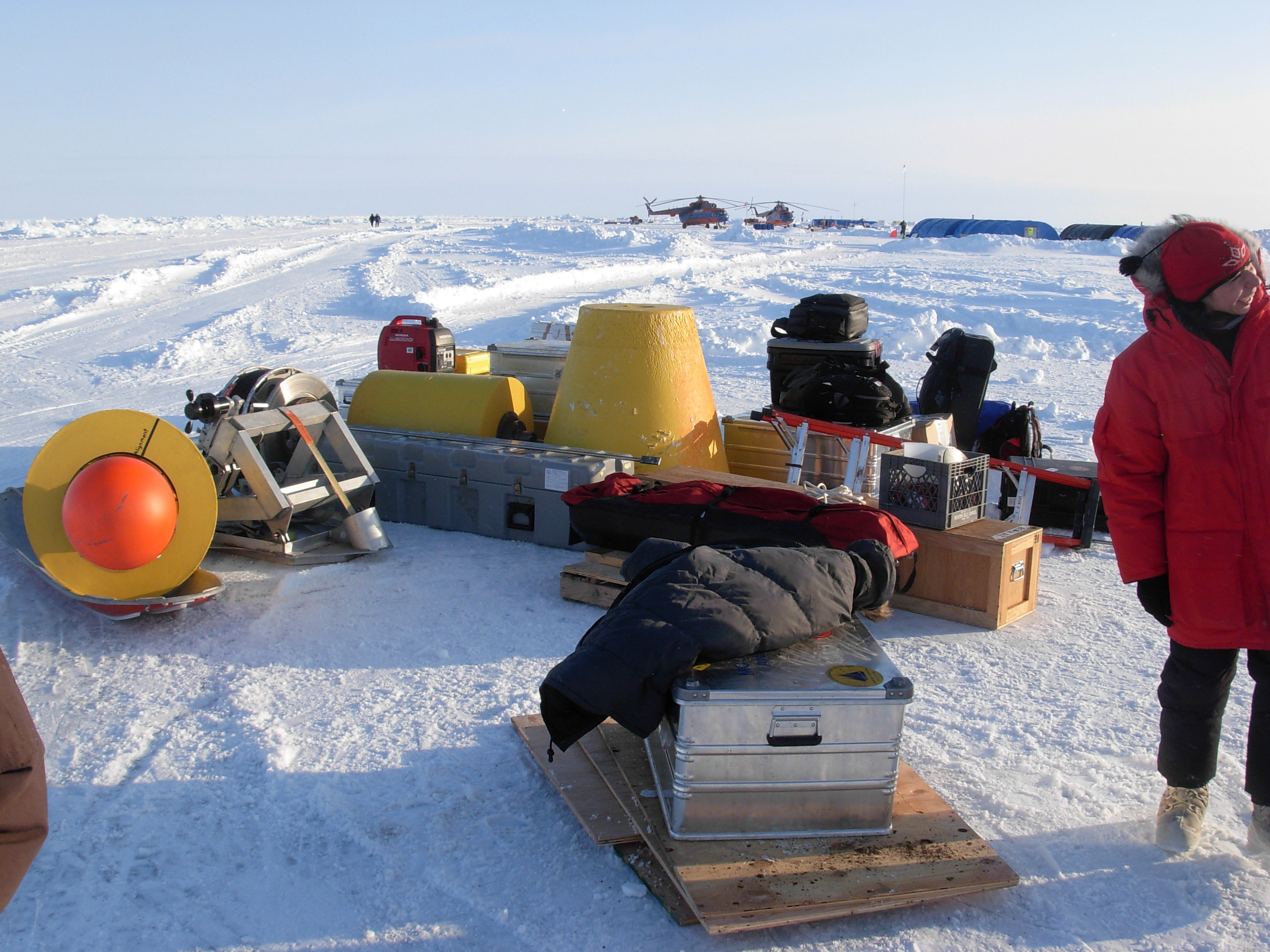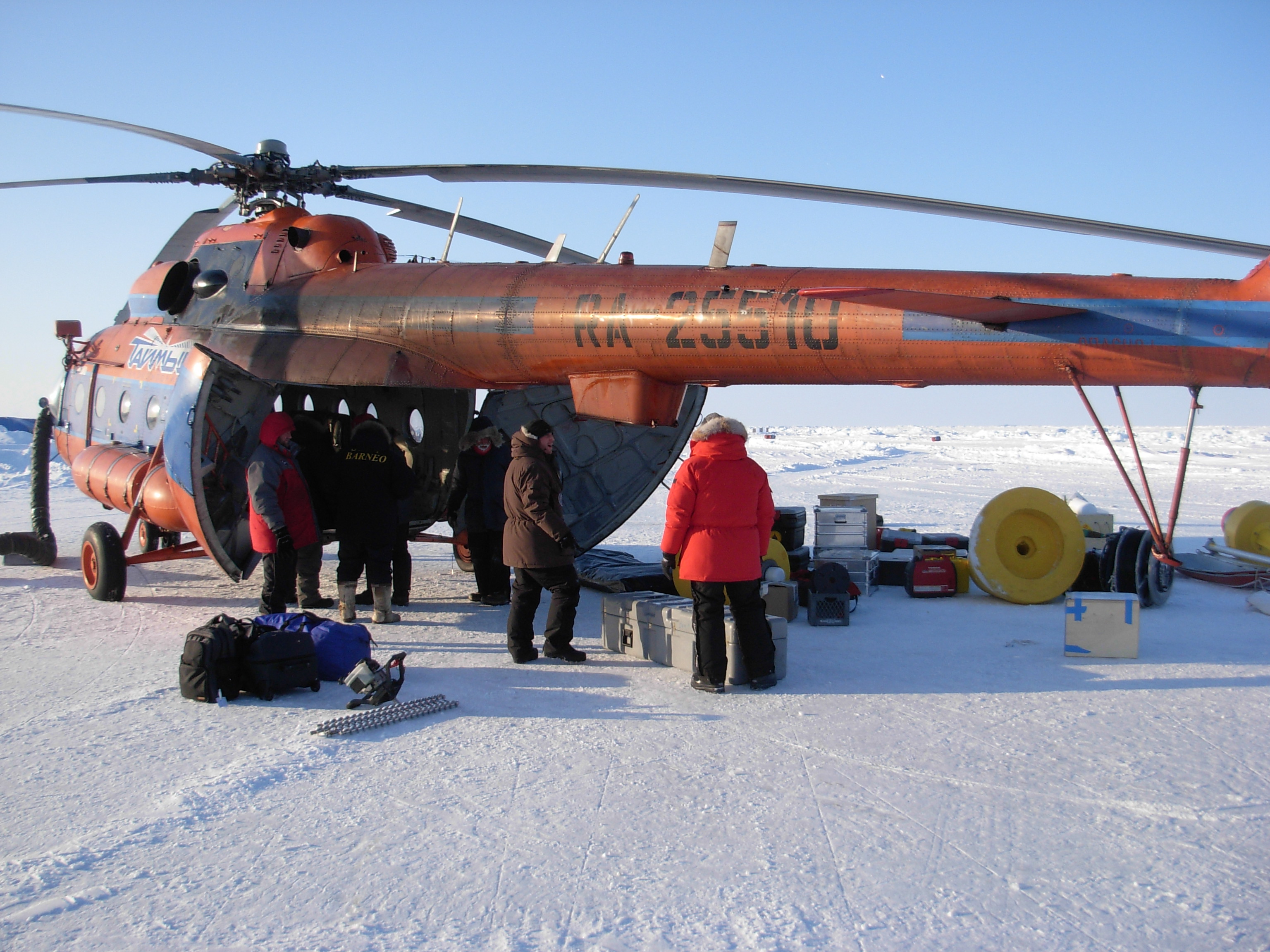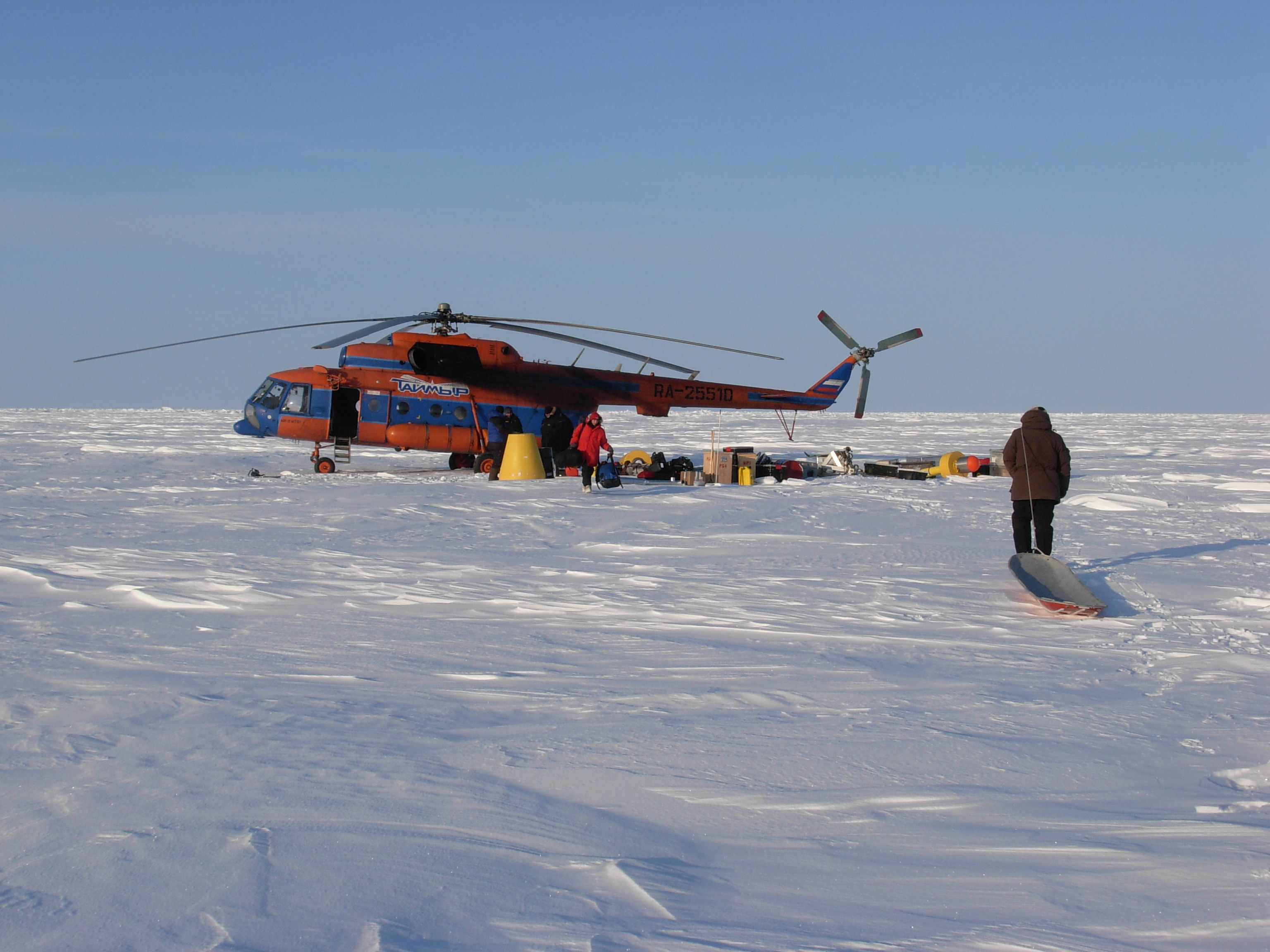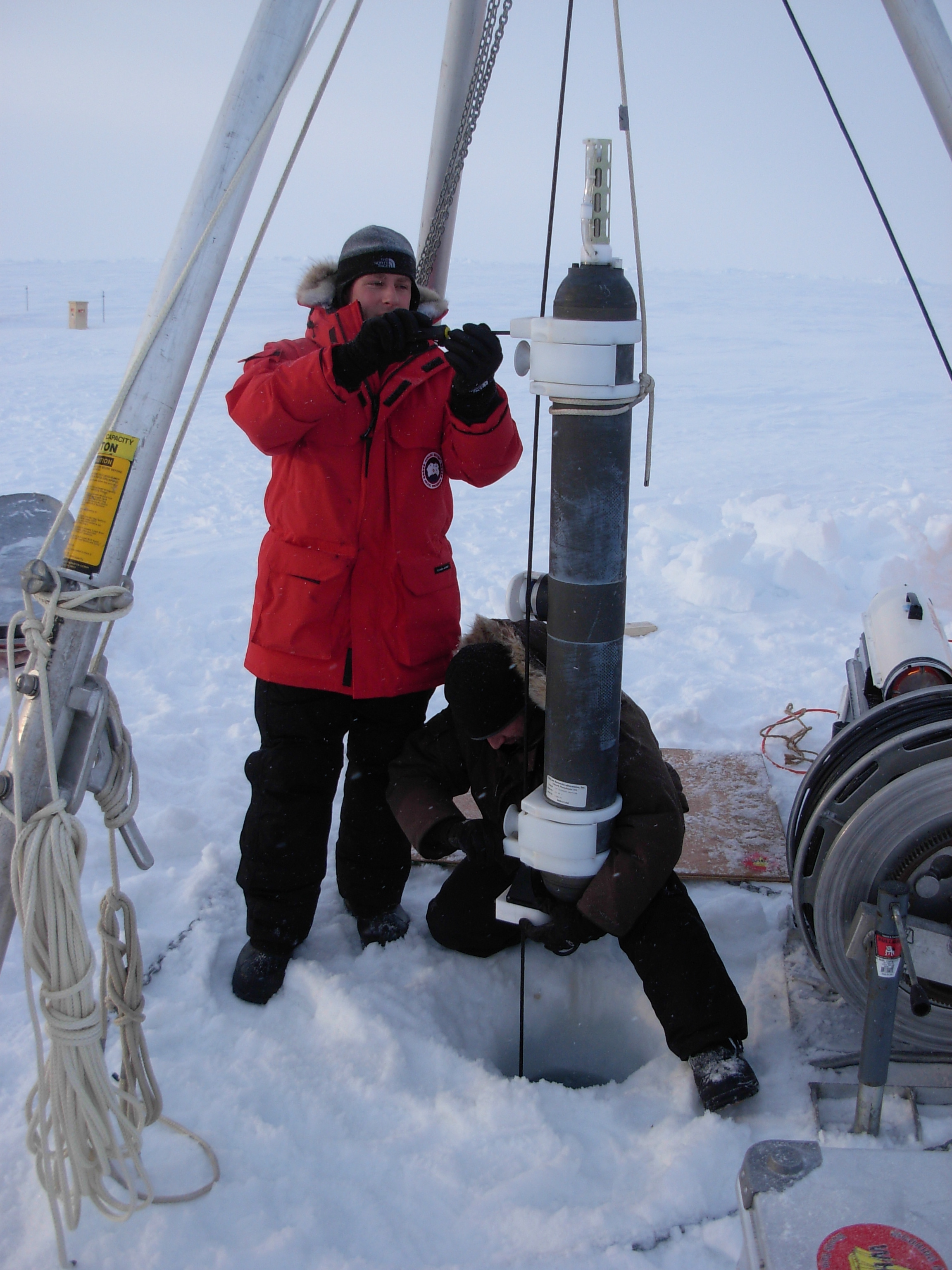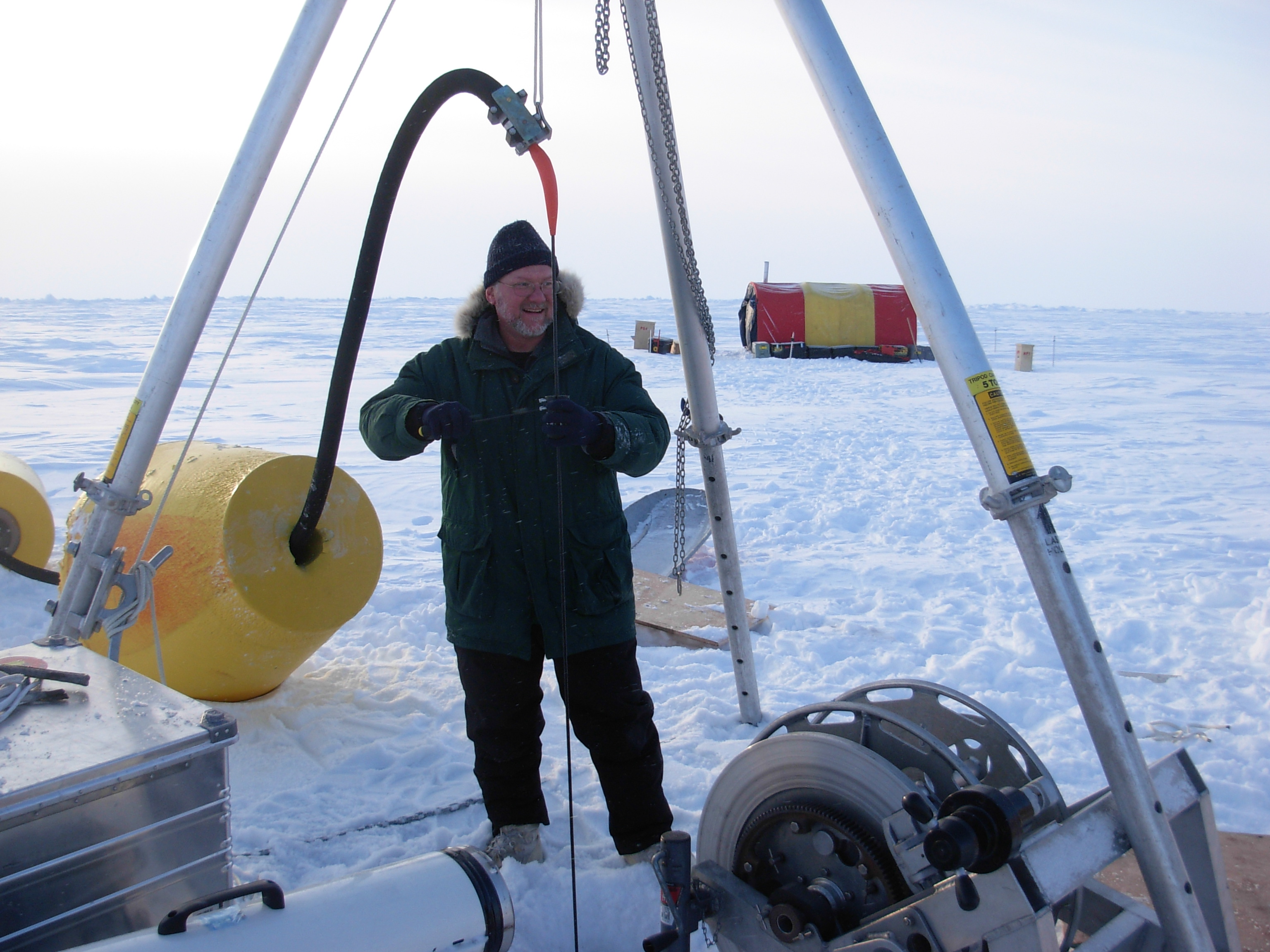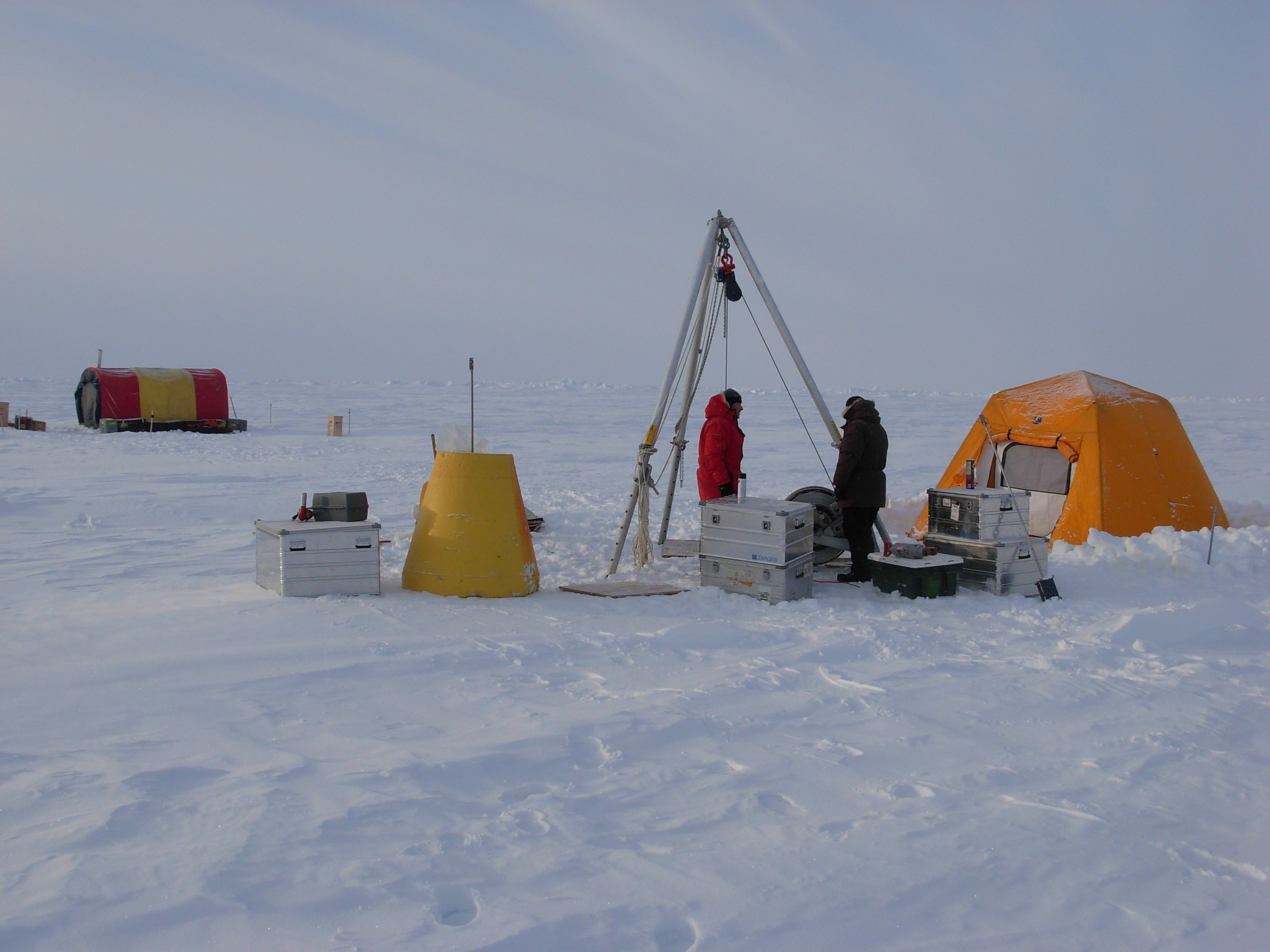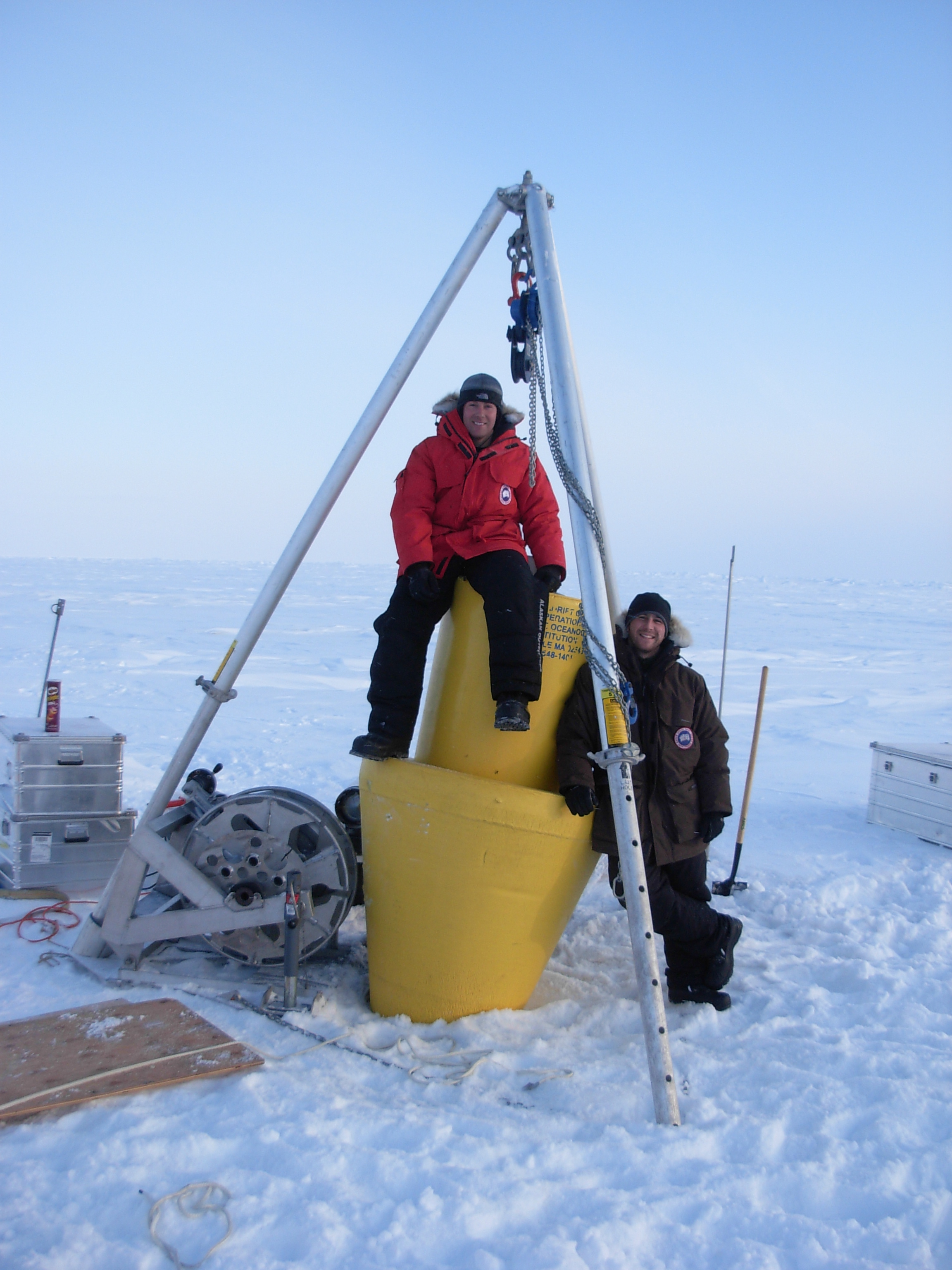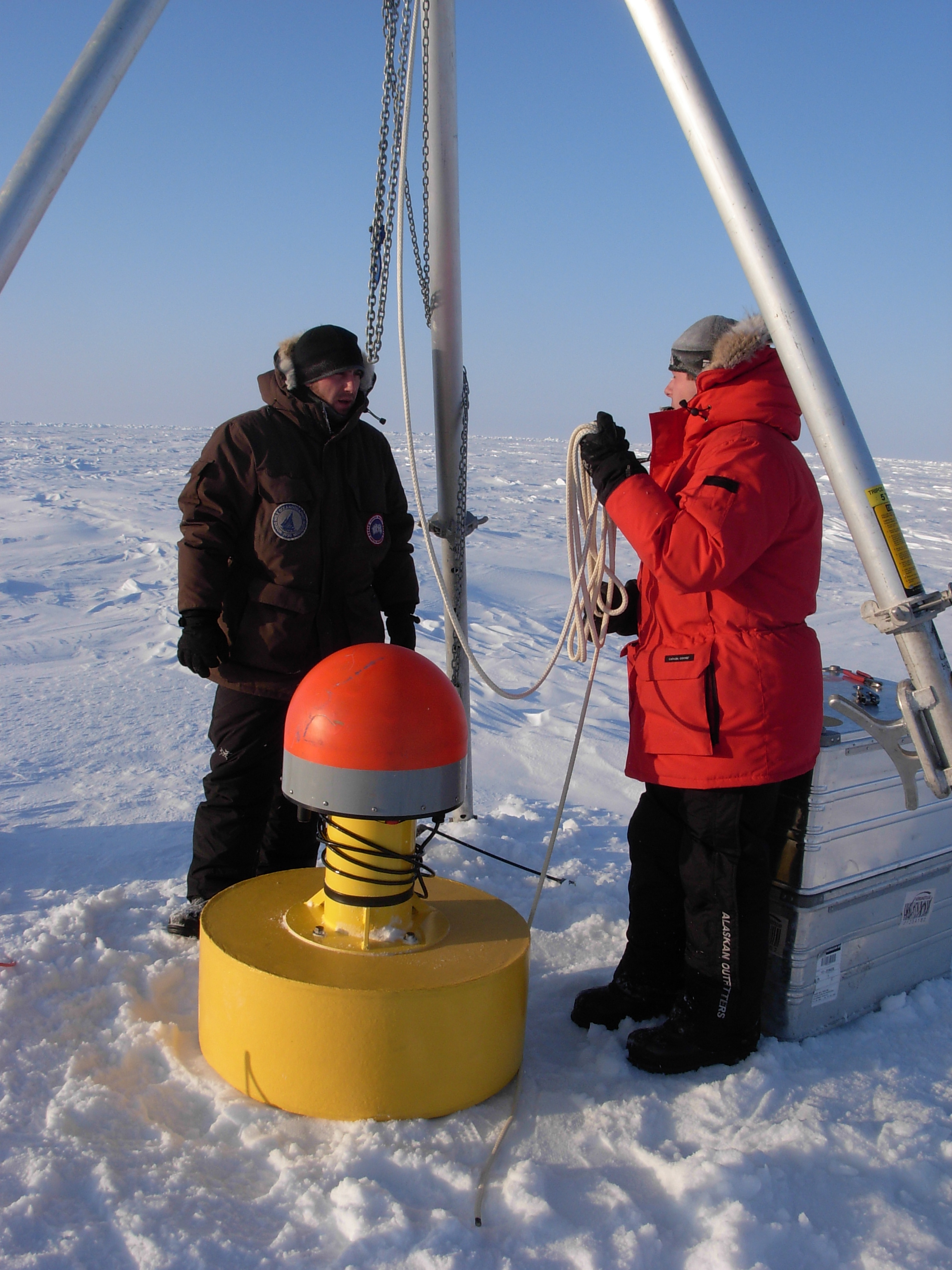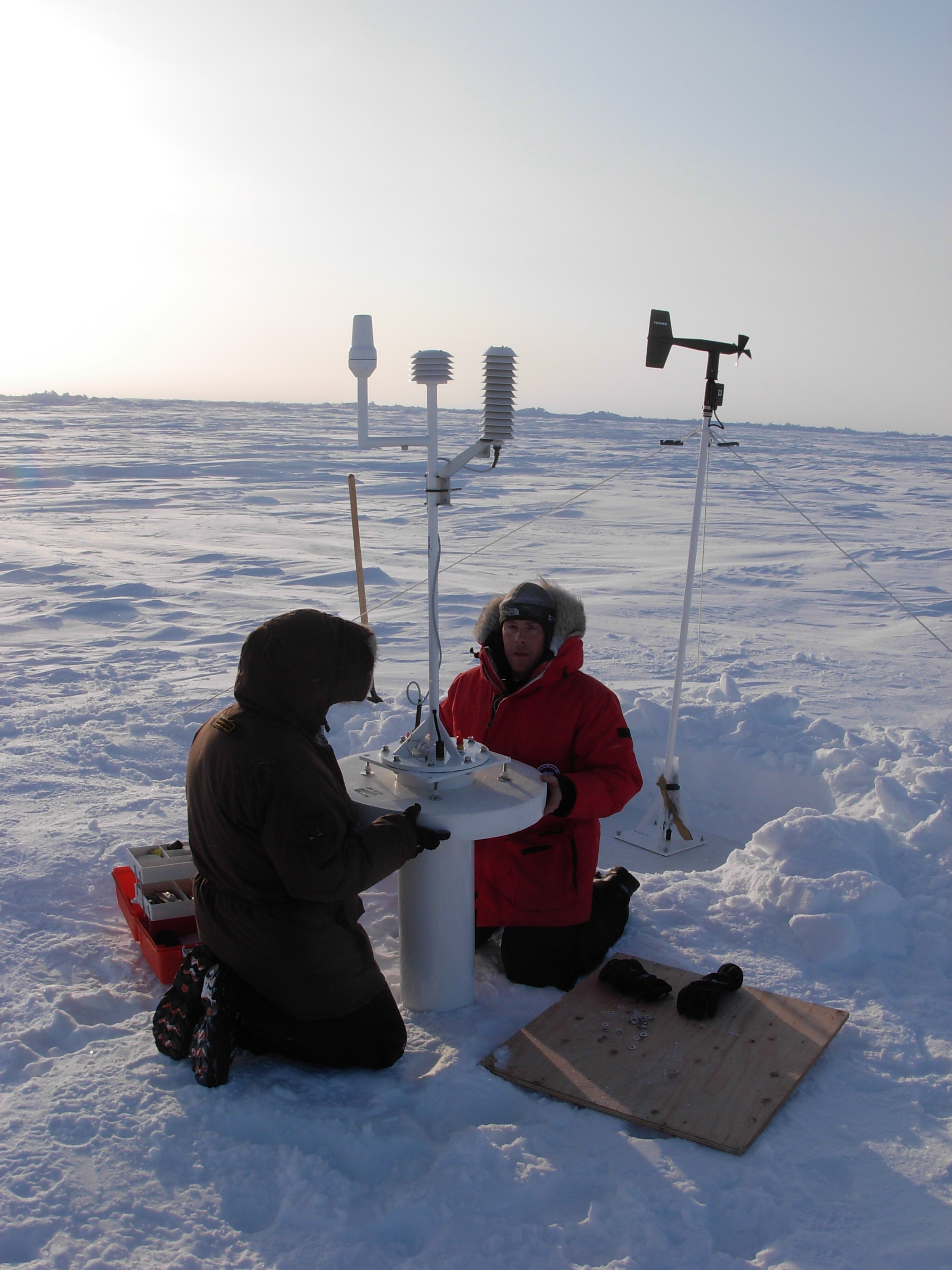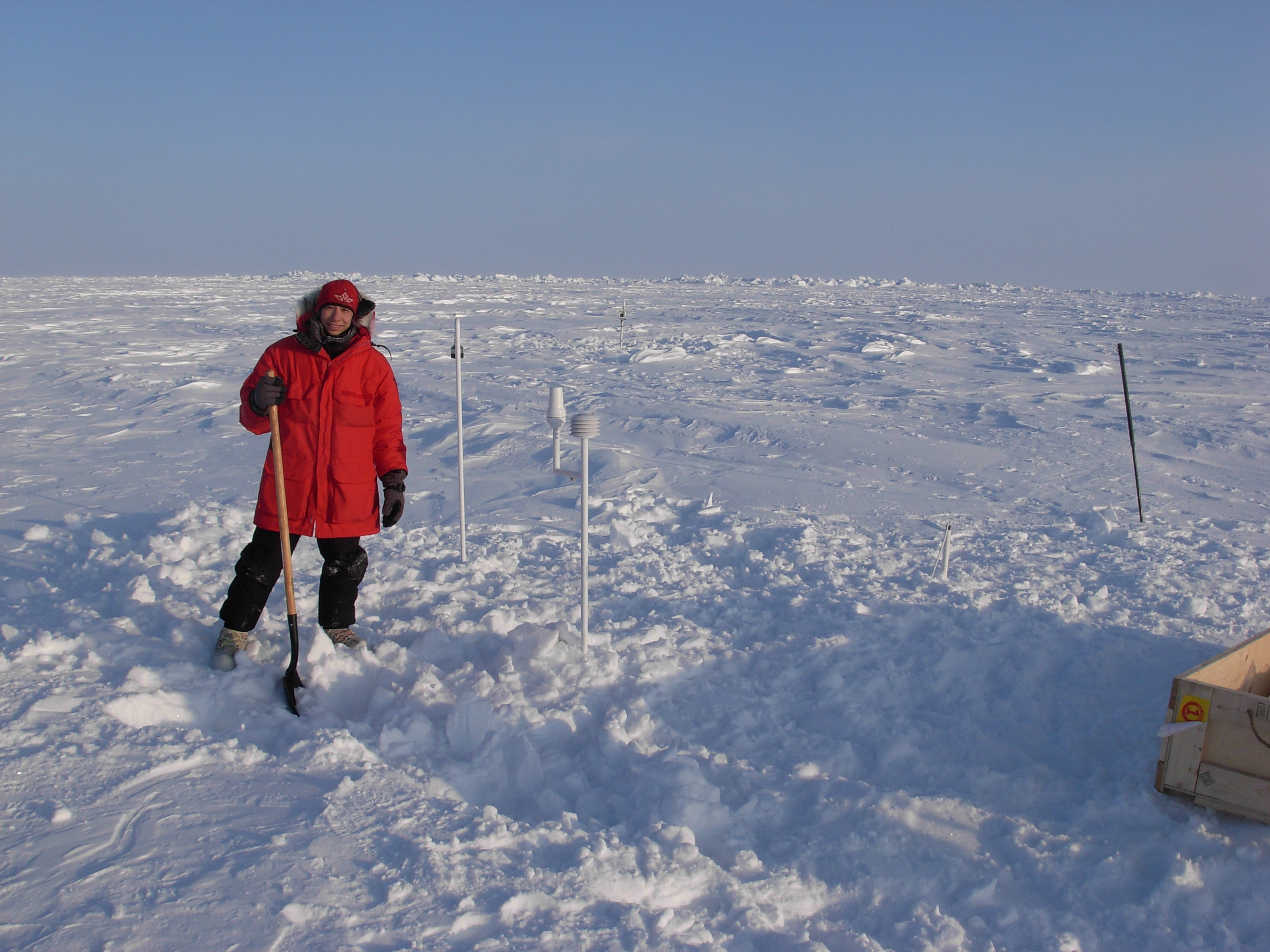ITP38 Deployment Operations
Skirting the volcanic ash cloud between Iceland and Svalbard delayed the arrival of the 3 man deployment team at the Russian ice camp Barneo. Three hours after arriving at the camp on April 18, 2010, they departed on an MI-8 helicopter with ITP 38 and AOFB and a temporary camp. The Russian pilot was instructed to head as far upstream of the ice drift as possible to lengthen the drift of the Ice-Based Observatory (IBO) of 4 buoys that were to be deployed, and seek a relatively flat multiyear floe 2.5 to 3.5 m thick, at least 100 m in diameter, with ridges no greater than 2-3 m in height. However all of the ice in the region was similar first year ice (~1.8 m thick) formed the previous autumn, so we had to settle for thinner ice. After about 2 hours, the helicopter landed on a large flat floe about 500 m in diameter with modest ridges all around at 88.5 °N, 148 °E - about 80 miles upstream of Barneo. The weather was clear with light winds and air temperatures around -15 °C.
Immediately upon landing, a 5 cm hole was augered through a selected floe to determine the floe thickness, then the helicopter was shut down and the gear unloaded. While the helicopter waited, 3 NPEO personnel constructed the 8’x20’ winter tent and heater on the floe which took about an hour, while the deployment team staged the instrumentation and camp provisions. After a short briefing on the flare gun and rifle, all but 3 boarded the MI-8 and departed for Barneo. Our small party was left to live on this floe for the next few days, install the ITP and AOFB buoys on this floe, and when completed would call for the delivery of the IMB and PAWS systems, which would be installed while the tent was being removed. The AOFB was specified to be at least 25 m from all the other buoys and the same distance away from any ridges. After the placement of the buoys was determined, and a working tent some of the deployment apparatus were assembled, our efforts turned toward outfitting our living quarters with cots, melting ice for drinking and cooking water, and bringing food inside for defrosting.
The following day started off with similar weather conditions as the previous day. Deployment of ITP 38 began around 0900 UTC by augering the 11 inch diameter hole through the icefloe. An hour and a half later the ITP profiler was in the water and passed its first communications test. Another hour later (by 1140 UTC) the surface package was in place over the system, and the profiler again tested positively. Deployment of the AOFB began after lunch 90 paces away from the ITP surface float. The ice thickness at the AOFB site was 1.85 m thick, with 15 cm of freeboard and 33 cm of snow (however the ice thickness only a few paces away for the thermistor string was only 1.4 m). The wind picked up some during this time which slowed the deployment somewhat, but still took less than 2 hours. Over the next 2 hours, the ice thermistor string was installed and all testing completed positively.
On April 20, the Russian MI-8 helicopter arrived in the afternoon with the other 2 buoys. The tent was removed while the IMB and PAWS buoys were deployed in 1.5-1.6 m thick areas of the ice. The consistent 30 cm of snow across the floe may have hid variations in floe thickness that would have been apparent if the surface topography was visible. A NOAA/PMEL webcam was also installed at this time. After a 45 minute flight back, the deployment team and all gear were returned to Barneo and were transported back to Svalbard on the following day.
